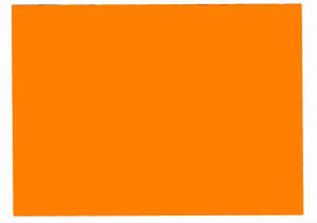Ghalia Ben Jdidia explains what Veuve Clicquot's fight to protect its orange label reveals about the difficulties of establishing distinctive character when seeking to register a colour as a trademark in the EU.
In its battle to protect its famous orange label, Veuve Clicquot Ponsardin illustrates perfectly the challenges brand owners face when seeking to establish acquired distinctiveness through use for colour marks within the European Union (EU).
Why is registering a colour as a trademark so challenging?
As with any trademark registration, registering a colour as a trademark requires applicants to meet a series of strict legal criteria in the EU. From the perspective of colour marks, the most challenging condition is distinctiveness.
Generally, the EU Intellectual Property Office (EUIPO) tends to consider colour marks as not inherently distinctive. As a result, practice shows that colours can only obtain trademark protection when they have acquired distinctiveness through use. Over the past few decades, renowned Champagne house Veuve Clicquot Ponsardin has faced a battle to demonstrate this acquired distinctive character for its orange label.
Colour as a trademark: Seeing orange
The story begins in 1998 after Veuve Clicquot Ponsardin filed a trademark for the orange colour characteristic of the house (pictured below) and designating, in particular, a range of Champagne known to the public and marketed by the company MHCS.

As per the practice at the time, the colour was designated in the application as a 'figurative mark', with the following definition in the 'colour claimed' section:
"Protection is claimed for the colour orange for which the scientific definition is as follows: trichromatic co-ordinates/colour characteristics: x 0.520, y 0.428 – diffuse reflectance 42.3% – dominant wavelength 586.5 mm – excitation purity 0.860 – colorimetric purity: 0,894."
After a complex registration procedure (the application was refused several times on the grounds that it lacked distinctive character), the mark was finally accepted by EUIPO's Board of Appeal almost 10 years after filing based on acquired distinctiveness through use. This registration was subsequently challenged by supermarket chain Lidl Stiftung & Co. KG (Lidl), which applied for a declaration of invalidity in 2015 on the grounds of lack of distinctiveness.
Folllowing many years of back and forth in the courts, the dispute was seemingly closed by a decision by the General Court of the EU in September 2021, which ruled in favour of Veuve Clicquot and its orange colour trademark. (A subsidiary of Lidl filed a third application for invalidity of the contested mark in November 2021, but this application was rejected in August 2022 by EUIPO's Fourth Board of Appeal, which concluded that there was no doubt as to the distinctive character acquired through use.)
Colour as a trademark and proof of distinctive character
However, the famous Champagne house's celebrations were short-lived. On 6 March 2004, following an appeal by Lidl, the EU General Court annulled the decision in the territories of Greece and Portugal based on a lack of relevant evidence of use of the colour as a trademark.
In its decision, the Court found that the evidence presented by the defendant (in particular, relating to sales volumes and advertising material) did not directly demonstrate that the disputed trademark had become capable of identifying the Champagne wines concerned as coming from a specific company.
For both countries, the Court specifically stated that: "sales figures and advertising material can be regarded only as secondary evidence which may support, where relevant, direct evidence of distinctive character acquired through use, such as that provided by surveys or market studies as well as by statements from professional bodies or statements from the specialised public."
When it comes to proof of acquired distinctiveness through use in the EU, it is accepted that this may be provided globally for all the member states concerned, or separately for different member states or groups of member states. Indeed, in certain cases, documents relating to groups of member states may be accepted. (For example, if, as an internal strategy, the economic operator groups together several member states within the same distribution network and considers them as a single national market, or where, due to the geographical, cultural or linguistic proximity between several member states, consumers in one of the states are familiar with the products and/or services offered in another.)
However, as reiterated by this latest ruling: "It is not sufficient that the person with whom the burden of proof lies merely produces evidence of such acquisition that does not cover part of the EU, even if that part consists of a single member state." In other words, this evidence must not be limited to a substantial part or the majority of the territory of the EU, but must demonstrate actual use, thereby enabling the public to identify the sign as a trademark in each state taken individually
This is a rather telling illustration of the difficulty of benefiting from distinctive character through use in the EU, even for trademarks with reputation. Indeed, despite intense efforts, trademarks rarely succeed in winning their case on this basis, and even more so when it is invoked to obtain rights over so-called 'non-traditional' trademarks, such as the use of colour as a trademark.
However, this is not the end of the story. On 16 May 2024, MHCS filed an appeal to the Court of Justice of the European Union (CJEU). If the Court accepts the appeal, the next question is if it will endorse the reasoning of the EU General Court. We will continue to monitor the case and keep you updated on its progress.
The content of this article is intended to provide a general guide to the subject matter. Specialist advice should be sought about your specific circumstances.


